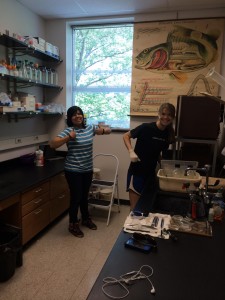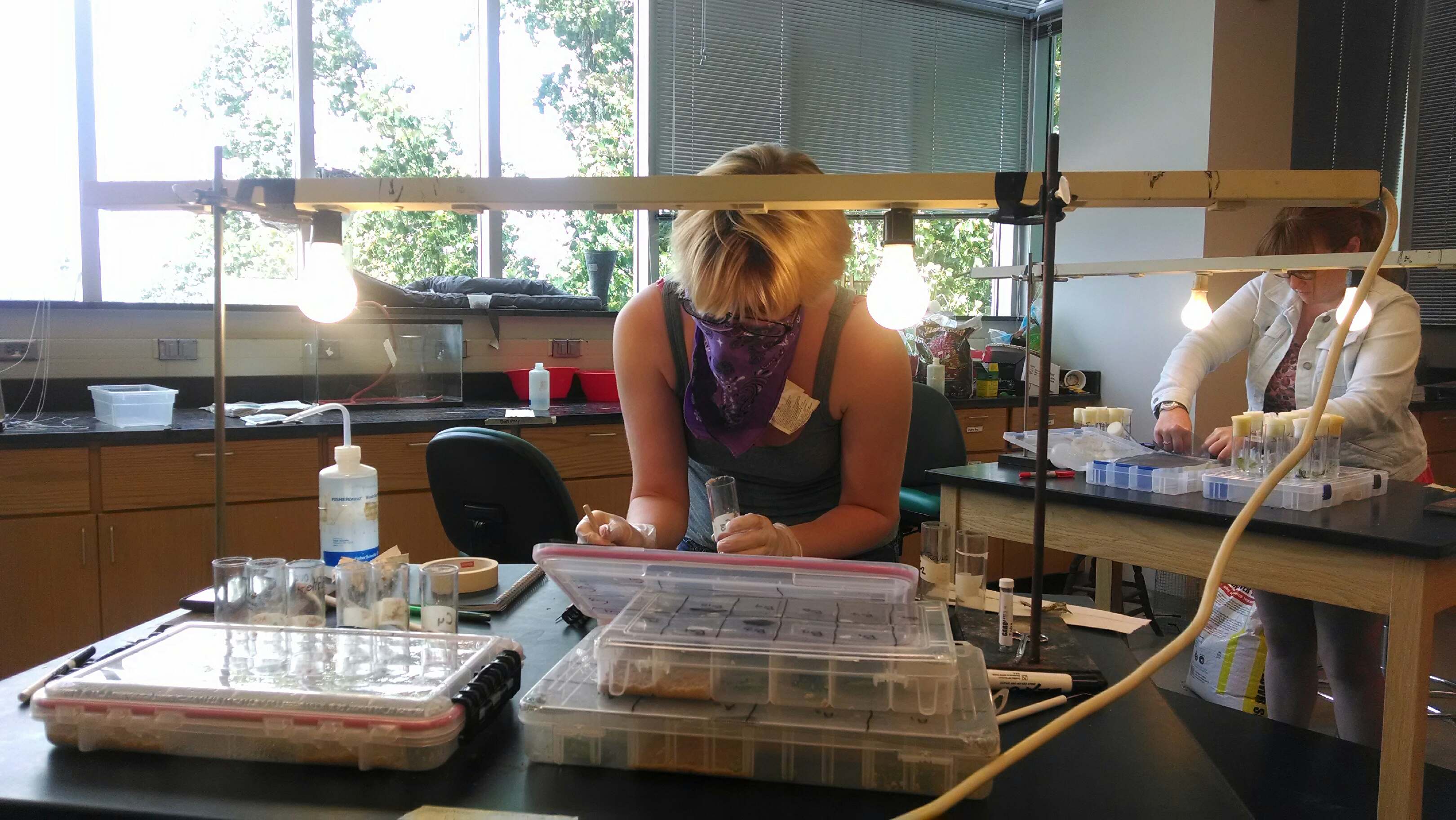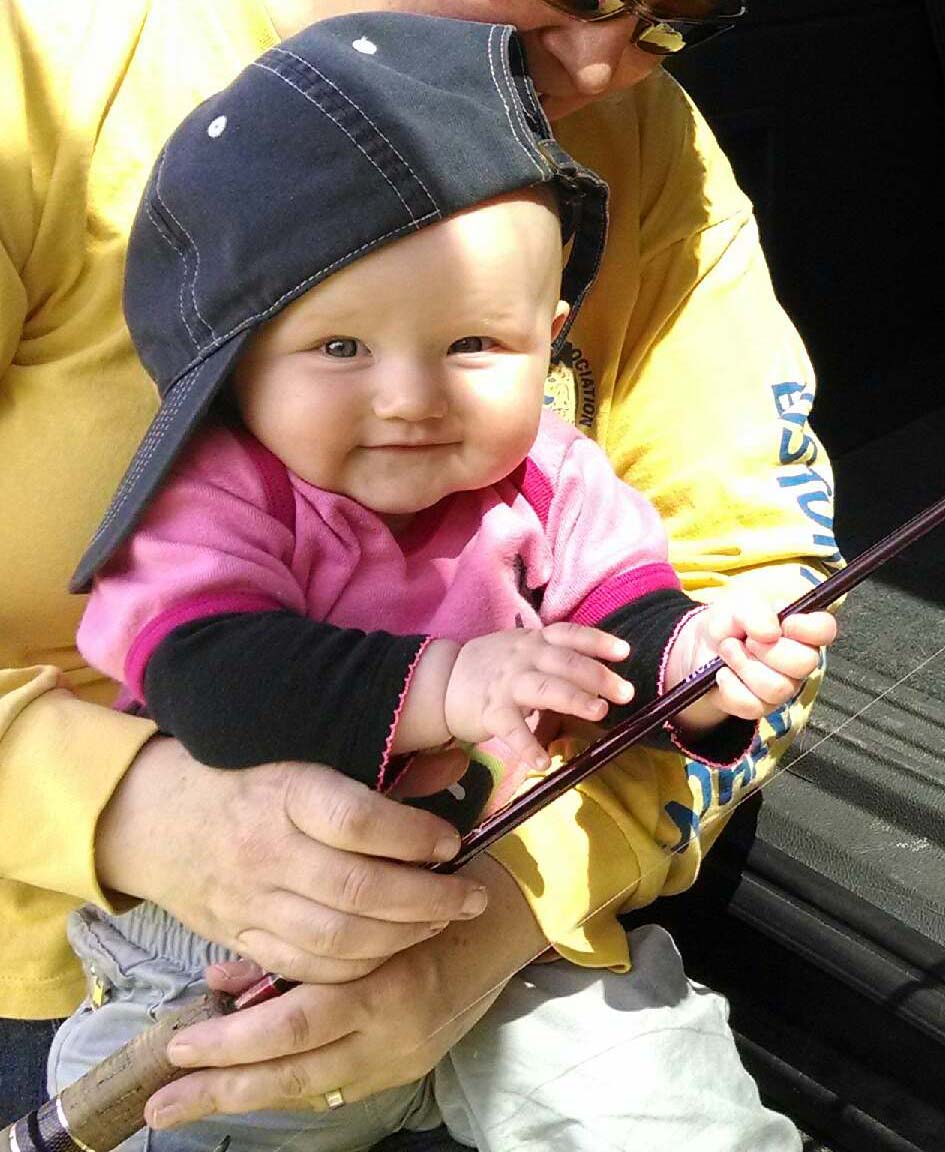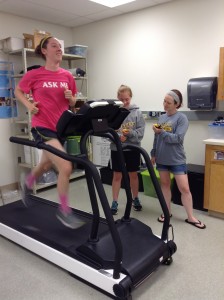Hello, world! This is Sophia Fricke reporting in from the Staab Lab. So far, summer research is off to a great start. Now, by the end of our second week, we are in full swing and are easily falling in to the rhythm of our days. By the same token, every day is a new adventure and we can never quite predict what it will bring. This, I feel, is the nature of discovery, and it keeps us on our toes.

Paola (left) and Sophia (right) cleaning the lab
Our lab group has developed a great sense of camaraderie and collaboration, and we’re learning to work as a team, while each of us is specifically pursuing different and unique research questions. Maybe I’m biased, but I think the project that I’m working on is one of the coolest that I’ve encountered! Right now, I’m working on identifying and classifying new types of cartilage and connective tissue in fish, with the long term goal of applying our findings to human medicine (i.e., treatments for arthritis) in the future. To do this, I will use a technique called immunohistochemical analysis to detect different proteins and fibers that make up different areas of tissue. Basically, this means that I will use antibodies that bind to different proteins, such as collagen type II, to stain samples different colors that I can use to distinguish the molecular makeup of tissue.
Since many bones develop from cartilage precursors, and develop in response to external forces, I’m also curious about how ossification might change in response to different forces. My first specific experiment will be to look at the mechanisms of cartilaginous ossification/mineralization in zebrafish, using tanks with varying levels of viscosity. My hypothesis is that I’ll see increased amounts of ossification in the fish living in more viscous water. I will use a fluorescent Calcein stain to determine the amount of calcium ions in matrix at multiple points of time during the development of the fish.

Zebrafish – from http://vetmed.duhs.duke.edu/GeneralProgramInfo.html
This experiment will function as a baseline for my knowledge of cartilaginous ossification, and will provide a springboard for future work. Once I know which types of cartilage are more likely to ossify, and how, I will be able to move forward with testing different methods of molecular inhibition of excess ossification. While this would be done preliminarily in vitro, the goal would be to later test it in zebrafish, before finally bringing forward a new type of treatment to the medical world for osteoarthritis. This technique would not only be minimally invasive, moreover, it would also prove to be a significant step forward in the field of advanced tissue engineering.
I know I’m only two weeks in to my summer research at McDaniel, and I don’t want to get ahead of myself. However, I firmly believe that vision is necessary for any achievements or advances in science. So for now, I’m going to stick with “reeling myself in” to address one step of my first experiment at a time, and look forward to welcoming some new baby zebrafish to our lab!

And finally… a joke so terrible that you might even laugh!




 spend our free time pondering new studies to explore different components related to ours.
spend our free time pondering new studies to explore different components related to ours.

